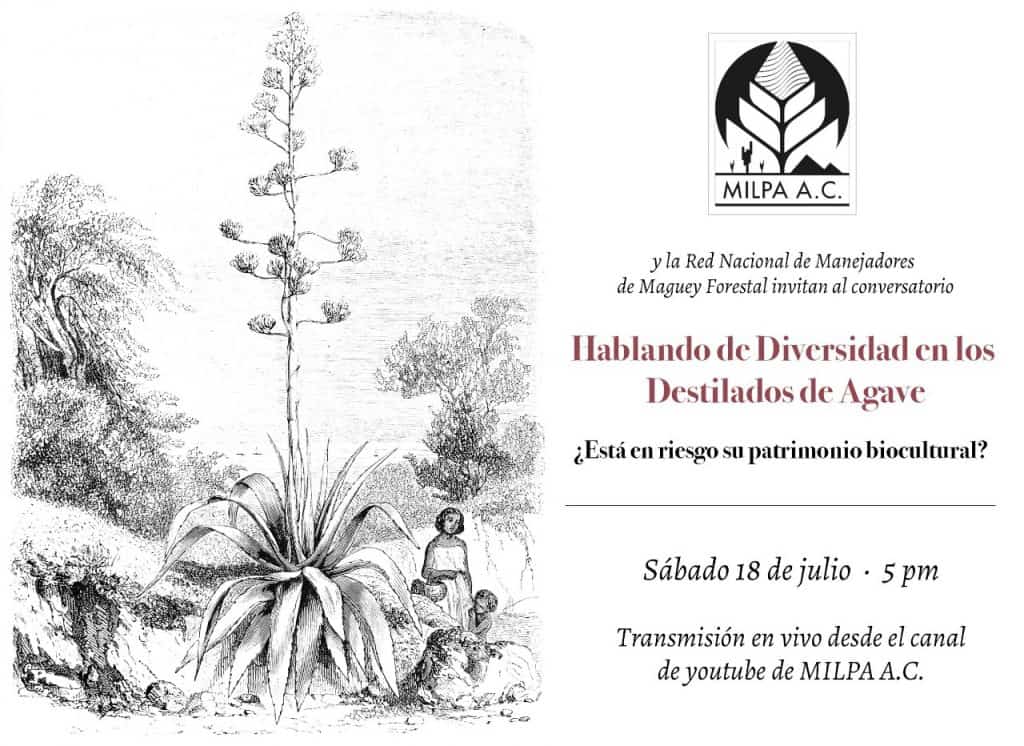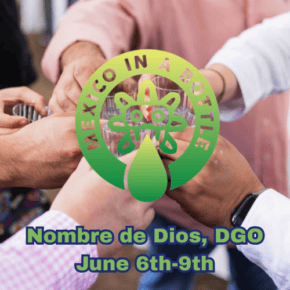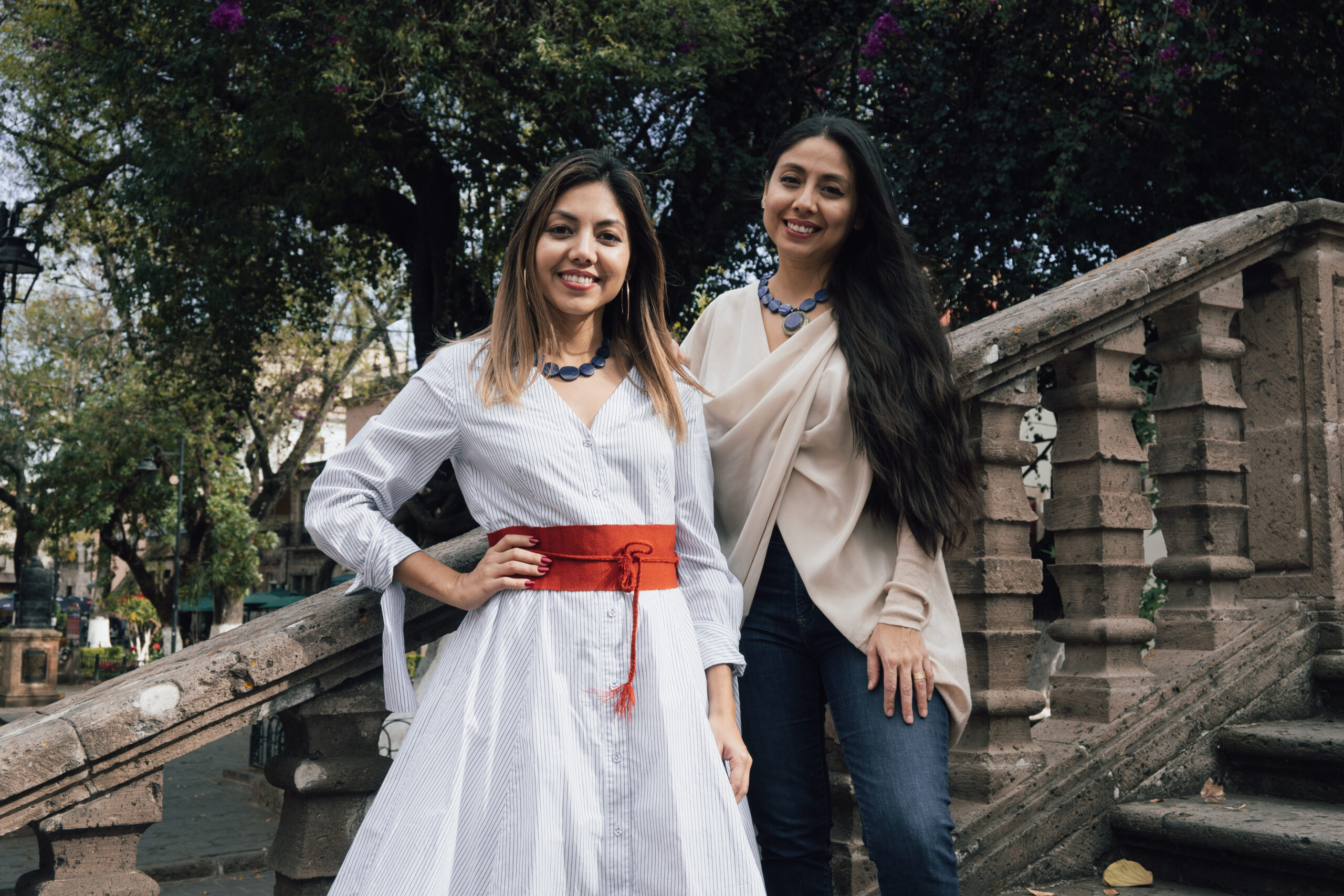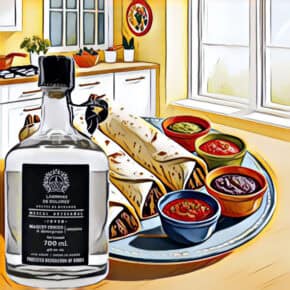The future of mezcal depends on the preservation of biodiversity. If we want to keep mezcal flowing, we might have to switch to a seasonal consumption that values quality over quantity.
The growing popularity of mezcal in the world has created new development opportunities to different communities in Mexico where families are recovering their family distilling tradition to make a living out of it. Different from tequila, mezcal’s value proposition focuses on the artisanal and traditional aspect of its elaboration. The cultural heritage of the communities makes possible the elaboration of mezcal and it has always played an important role in every brand of storytelling. Even though the mezcal market currently represents about 2% of the entire tequila industry, a recent study by the Future Markets Insight showed that by 2027 the global mezcal consumption will account for revenues exceeding US$ 700 Mn. But in times of COVID where distribution and direct sales have considerably slowed down, where is this growth expectation left?
In the last decade, a promising future for the mezcal world has developed under the shadow of climate change effects in the ecosystems, the shortcomings of Nom-70 and regulations and an increasing demand of maguey. The lack of a united approach between companies with greater capital and small producers on how to manage the scarcity of resources of water and maguey (maintaining genetic diversity and limiting overharvesting) could eventually limit the potential of Mezcal and agave distillates to become the generator of social welfare, equity and progress.
The pandemic has accelerated the need for a new paradigm of consumer behavior. If the organic food and farm to table movement invited us to care more about the source of our food, these times call for fully embracing the concept of seasonality in our consumption habits. According to UN sustainability goals related to food and agriculture, executing actions such as respecting the natural production cycle of the ecosystem, following local tradition, being open to locally grown foods and eating what is in season, can help shift the buying patterns of consumers and stakeholders. It can also help preserve the traditional crops, stories, recipes and social heritage of the culture where all of it originates. How maguey is grown will play a central role in these actions.
Leading the charge in the conversation about the future of mezcal is MILPA AC, an organization created in October 2018, during the third annual meeting of Red Nacional de Manejadores de Maguey Forestal (National Network of Maguey Handlers). This is an intersectional and interdisciplinary initiative where different specialists, academics, and agave handlers work together to acknowledge and respond to the current challenges regarding maguey management.
The MILPA network aims to promote the sustainable utilization of maguey with an integral vision of the socio ecosystems by sharing concerns, needs and solutions for better management, productivity, and organization of the communities that produce agave distillates. On July 18, MILPA hosted the first of a series of online round tables focused on the current climate for Agave Distillates.

The program for this first conversation was divided into four different sections. Seven specialists held a virtual discussion around the problems, consequences, and implications of the Denomination of Origin (DO) for agave distillates. The panel of biologists, anthropologists, sociologists, producers and distributors included Selene Rangel, América Delgado, Carlos Lucio, José Hernández, Graciela Ángeles, Rafael León, Pedro Jiménez, and Ignacio Torres, all of them members of MILPA AC, who presented a multidisciplinary analysis to explain how the DO has negatively affected biocultural diversity. The DO has failed to create a does not provide the certainty to farmers to preserve the agave diversity in the future a protective system when it comes to the development of species, nor does it provide a full scope to sustainably manage the agave population.
Interactions in natural habitats
How much do we think of the ecosystem when we see a bottle of mezcal? Dr. America Delgado, specialist in Biological Sciences, began her presentation discussing the more than 10,000 year relationship between humans and agave which are linked to the evolution and development of Mesoamerican cultures, People came to understand the properties of the plant and how to benefit from it, passing this knowledge from generation to generation, making agaves a fundamental part of the rural culture in Mexico. According to Delgado, there are 22 different categories of use that have been identified such as food source, medicine, housing, soil management, distillates, foliage, fuel, ornamental, cleaning purposes, among others.
These kinds of biological interactions are fundamental to the creation of biodiversity since they are linked to “services” generated within the environment and may affect the development of other species like the human beings. The role of pollination, and its role in maintaining genetic diversity which helps control plagues and illnesses is one such example. Others include the relationship agaves have with organisms such as mycorrhizae, a type of fungus allows the plant to better absorb nutrients from the soil; agaves are home to insects and animals, hold wasp nests, generate a flowering nectar to allow the large migration of bats with whom the agaves have had a relationship for thousands of years. A balanced community of microorganisms, both pathogens and beneficial, can coexist and do not represent a problem when the plants have strong genetic diversity.
Unfortunately, these interactions are now happening under a significant amount of stress due to increasing practices of intensive farming and the extractive economy of resources such as maguey, water and firewood. According to Delgado, the mezcal boom and the DO, both have negatively affected the biocultural heritage in both tangible and intangible ways, impacting not only the 58 different species and varieties of agave used to prepare distillates, but also wild yeasts, specific weather conditions, the knowledge of maestros mezcaleros, and the diversity of materials used in the mezcal making process. For example, in 1930, ten varieties of agave tequilana began disappearing because of the focus and specialization of the industry in the Tequilana Azul (blue) variety. This negatively affected the other varieties to the point of extinction as they were discarded in preference for the Agave Azul.
Dr. Delgado provided important figures to support her concerns of agave availability: out of the 58 varieties used for distillation, 40 come from wild populations, twelve of them are semi cultivated, twelve are domesticated, five are not domesticated but recently cultivated and four of them are intensely cultivated. According to CRM, a total of 7.4 million of liters of mezcal were produced in 2019, 14.2% of that amount came from 62 species both wild and cultivated agaves (except espadin). Clearly, the evolution and increase of mezcal activity over the past decade has had a profound impact on the environment when we see that eighteen of the 58 total varieties -31% of the total- are now in the list of the most vulnerable, close to extinction. The CRM does not provide a record of which are wild species but MILPA AC rectified that 6.8% of the production of mezcal in 2019 came from three agaves that are now part of the list of most vulnerable: potatorum, cupreata and karwinskii. The statistics also prove an increasing demand for singular distillates which puts in danger other varieties such as marmorata and tepextate, both very close to being included in the vulnerability list.
For Dr. Selene Rangel, also specialized in Biological Sciences, these figures show the effects of altering the natural functions and regulations of the environment. Excessive extraction of materials increases the vulnerability of the species and the development of the communities of farmers. If they are not healthy then the ecosystem suffers. When we talk about intensive agave farming, only 40% of cultivated agaves are used. This is because monocropping, or the practice of growing a single crop in an area, isolates the species or variety, resulting in a lack of interaction with other organisms which increases the plants vulnerability and thereby making it sensitive to plagues due to a low genetic density. The effect of this kind of farming also impacts the social fabric of the communities because farmers have traditionally been involved in multiple activities throughout the year, of which distilling spirits is just one. Graciela Ángeles of Real Minero calls it “pluriactividad” which involves the development of the milpa or rotating multiple crops, providing different agricultural products to the community. The milpa way of life is disrupted when the farmers become part of the “machine” of mezcal production and only producing juice to sell to different companies. This evolution of the process has become a rallying cry for some people now asking where is the essence of traditional mezcal?
Denominación de Origen
According to the World Intellectual Property Organization (WIPO), a DO is “a special kind of geographical indication generally consisting of a geographical name or a traditional designation used on products which have a specific quality or characteristics that are essentially due to the geographical environment in which they are produced.” For Dr. Carlos Lucio, specialist in Social Sciences and Social Anthropology, the greatest mistake in the creation of the DO for mezcal was to make the agave the basis of the regulation. By doing so, the DO created a monolithic structure that homogenizes the category and benefits only the corporations looking over the protection of their own relationships, techniques, and knowledge. It responds to a power structure that incentivizes intensive farming with disregard of the “buen vivir” of the communities, their identity, economy, culture and social fabric. This has generated an impressive elasticity of the market subjecting the agave and its producers to the fluctuation of price.
The DO for mezcal tends to homogenize the product without considering its social heritage or its origin which is based in a sense of community and in the traditions of the collectivity. Its essence is not the individual experience. One example given by Lucio was the formation of the recent Raicilla DO which recognizes 16 municipalities for the elaboration of the spirit. However he says only 7 support the DO while the other 11 do not even recognize the name Raicilla because according to the tradition, it has always been called Barranca.
He also mentioned that various power structures dominate the conversation about the toxicity levels in mezcal production in regards to methanol levels. The levels set by NOM-199 impact traditional mezcal making and do not reflect the actual science when it comes to the toxicity of methanol. A discussion about this topic was hosted by Mezcalistas on Aug 13th where Dr. Ivan Saldaña from Casa Lumbre, explained how methanol is naturally created in spirits production and why there needs to be a revision of the guidelines, which when compared to the US and Europe are far lower and more restrictive.
Lucío also pointed out that the NOM dictating these guidelines hasn’t been updated since 1986.That is why, from his point of view, we are witnessing a “commercial colonization of new species of agave” in which the commercial activity reduces their opportunities of development.
This commercialization of the mezcal category has led to an increase in a category called destilados de agave, bypassing the regulations that govern Mezcal. This can be because a producer or brand does not trust the certification process, or they do not agree with it because of the reasons listed above, or simply, they cannot afford the costs. MILPA AC calls for a reconfiguration of the NORM, or regulatory rule, that considers the natural distribution of agaves together with the inherent culture, and also that a territorial division using the hydrography, or water, limits as a reference rather than political frontiers.
Agro-Forestry: an ancestral practice with viability
The concerns expressed during this discussion led to an agreement among the presenters that none of the NORMS protect the biocultural heritage of the maguey. Because MILPA AC works closely with the communities, they think a way to ensure a better present and future of agave distillates is by assessing the value of the farmland and the labor of small farmers. They agree on having a conservation system that is active and cyclic, one that regulates the environment through methods inspired in ancestral knowledge in which resources are used with a sense of belonging. They also believe that the use of technology should not be avoided but carefully applied so that it doesn’t affect the flavors or the “soul” of the spirit, acknowledging its efficiency for measuring and monitoring the agave population.
For Ray Martínez, advisor to Mezcal Rajabule and member of MILPA AC, the alternative to intensive farming and agave monoculture/cropping, is the application of agroforestry systems and the ancient practice of incorporating trees into farming. Such systems strengthen the family production unit and reinforce a sense of belonging to the land that the community works and preserves at the same time. Martinez explained different ways to do this including growing a milpa (maize, grains, vegetables) in between the maguey plants; using agaves as a barrier located against cliffs for better erosion management; and, the use of endemic species of trees such as huaje, tepehuaje or oak interspersed along the agave populations to help prevent soil erosion and generate the delicious herbaceous component into the agaves. Martinez also clarified that these practices exist in very specific territories and are not a generalized practice. Agroforestry systems in Mexico harvest ¼ of the total rainwater received in national territory within a year. This current flows down the watershed to fill up the dams used for electric energy, irrigations systems, for water services in the city, among other economic activities.
The relevance of such systems is being proven and even tested through different ways of collaboration between the private sector and civil organizations like Forest Finance, a project that invests in degraded land to recreate local forests.
In Mexico, the large process of humanizing nature as a result of its cultural, social and ecological history has created a profound relationship between each plant specie, animal group, landscape and ecosystem and a cultural expression which can be language, a specific category of knowledge, a story or a legend, a mythical or religious meaning, an individual or collective experience, or a useful practice.
As América Delgado pointed during her presentation, culture is evolving continuously but in the case of modern society, there seems to be an important gap between culture and nature. This gap is increased by the role of the agro industry which builds longer bridges between the cities and the farmland, while creating non stop accessibility to foods without prioritizing its social traceability or seasonality.
Slowing it down
Growing agave is intrinsically linked to growing food, local traditions are part of the complete cycle of production and consumption. It is possible I am indirectly responding to a recent post by Susan on existential angst and the need for a Good Spirits Movement. Our need for immediate consumption coupled with a fear of missing out, increases the thirst to drink whatever is the next big thing, slowly bleeding it dry of its essence. At its heart, mezcal is created and stored so that when a celebration or ritual arrives, there is a mezcal awaiting to be opened and enjoyed by the community. Reinforcing the idea that good things come to those who wait, in this case meaning the best mezcal, could be the basis for a successful marketing campaign. Maybe what the current pandemic is telling us is to slow down and enjoy what the land is able to provide, when it can provide it.













Any opinion or projections as to what the future of mezcal will be per kilo?
Price*
I think everyone wishes they had the answer to that question! I don’t think there will be any clarity on that until we understand more when markets will more fully open and we get a sense of what demand looks like.